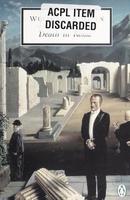Death in Rome
Death in Rome (German: Der Tod in Rom) is a 1954 German novel by Wolfgang Koeppen. Koeppen belonged to the literary generation of West Germany, which revived the devastated cultural landscape after twelve years of fascism and the ruin caused by the Second World War. Koeppen was one of the first artists to shine light upon the new social and political realities of the country at a time of chauvinistic and revanchist backlash. The novel explores themes associated with the Holocaust, German guilt, the conflict between the generations, and the silencing of the past. The novel is the third work of the so-called Trilogy of Failure (German: Trilogie des Scheiterns), about postwar life in West Germany. It succeeds Pigeons on the Grass (German: Tauben im Gras, 1951), which recreates a typical day in Munich in 1948; and The Hothouse (German: Das Treibhaus, 1953), which deals with the corruption of the Bonn government. With this trilogy, Koeppen established himself as an important figure in German post-war literature. Death in Rome opens with an epigraph from Canto III of Dante Alighieri's Inferno: Il mal seme d'Adamo, followed by the last sentence from Death in Venice: "Und noch desselben Tages empfing eine respektvoll erschütterte Welt die Nachricht von seinem Tode." Source: Wikipedia (en)
Editions
2- date of publication: 1992ISBN-13: 978-0-241-13238-8
- date of publication: 1994ISBN-13: 978-0-14-018790-8
In your inventory
In your friends' and groups' inventories
Nearby
Elsewhere
Work - wd:Q1197468
